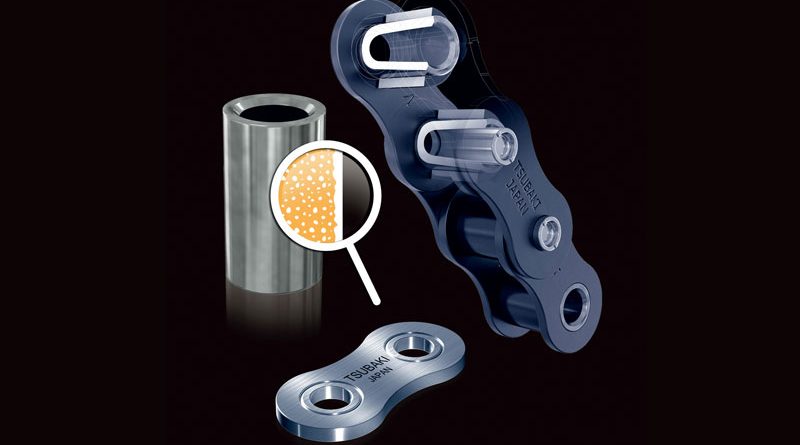How Much does TCO Matter When Choosing a Transmission Chain?
Tsubaki transmission chains have helped companies in a variety of industries to achieve significant savings. The choice of quality components has helped to reduce unplanned downtime, early failure and frequent replacement.
by Elena Magistretti
Specifying higher quality mechanical power transmission products usually comes with a price premium. However this premium can be more than recouped by their longer working life and lower maintenance requirements. Plant engineers and machine designers are advised to look at the ‘total cost of ownership’ rather than the purchase price when buying components such as transmission chain.
In its simplest form, TCO is the purchase price plus the costs related to maintenance procedures during the working lifetime of the product: in some cases, it is appropriate to also add a cost for the installation procedure. In real life scenarios manufacturing environments will also have to account for the production lost during the time taken to carry out maintenance. This latter element can have a large effect on the bottom line when a quality part reduces the occurrence of maintenance downtime. When considering chain, quality is designed in by using the best materials; manufacturing parts to exacting dimensional tolerances; heat treating links and pins with precision accuracy; and assembling them into finished chain with supreme care. Unfortunately, quality chain does not look that different from budget chain, so engineers must make a point of learning which are the quality brands and which are not. Tsubaki is recognised the world over as the leading manufacturer of industrial chain. It maintains this position through constant R&D and always-improving its manufacturing. Further, it offers excellent support services for both MRO specialists and end-users and strives to form strong, supportive relationships with customers and users alike so that its expertise is available to all. Tsubaki offers chain in a wide range of sizes and formats so that it meets the needs of the widest possible user base.
All aspects, not only purchase price, should be considered when selecting a chain
TCO has always been a prime concern for Tsubaki and its engineers identify unexpected downtime, early failure and frequent replacement as major contributors to uncertainties in TCO calculation.
These can all be reduced by the use of quality chain which leads to less likelihood of lost production. Peter de Blok, Sales Manager EMEA for Tsubakimoto Europe B.V., says a few minutes lost production due to unexpected machine stoppage is often far more expensive than the extra cost of quality parts. Several case studies are proof of this. For example, a confectionary producer who was experiencing frequent stoppages due to chain failure, asked Tsubaki to replace their chain drives with a quality alternative; in the first year of operation this achieved savings of over €148.000. Elsewhere, Tsubaki has helped a steel mill save over €114.000, while a car manufacturer is almost €263.000 better off thanks to upgrades in chain quality.
If the most important rule is to buy quality chains, it is also important to select the most appropriate size and style of chain. It is always worth considering a lube-free option such as Tsubaki’s Lambda chain which requires less maintenance and may save more money as it reduces cleaning needs caused by manual relubrication processes. Next, at installation and re-installation, make sure to check the tension, alignment, and if appropriate load sharing over multiple chains.

